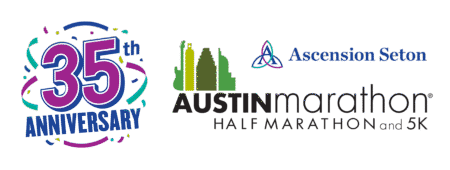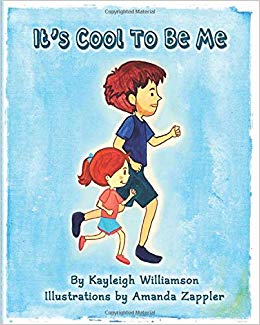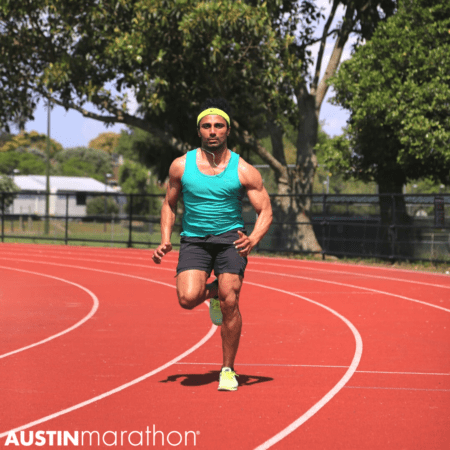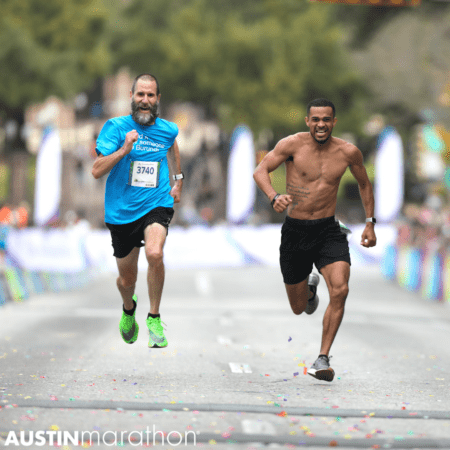Explore these 7 East Austin Highlights Near the Austin Marathon Course
Explore some of our favorite East Austin highlights and learn about their rich history
There are numerous legendary, significant, and beautiful locations in East Austin. From Huston-Tillotson University, Austin’s first institution of higher learning, to the many green spaces, parks and trails, East Austin is brimming with places you should visit. We whittled down our favorite East Austin highlights to those that are in close proximity to the Ascension Seton Austin Marathon course. We’re proud that the course runs through historic East Austin once again. On Feb. 16th, runners from around the world have a chance to soak in all that East Austin has to offer. That’s something we enjoy on a daily basis. Check out our list of the seven East Austin locations you must visit!
Huston-Tillotson University
Established in 1875, Huston–Tillotson University was the first institution of higher learning in Austin. It is a private, historically black university. The university’s history resides with two schools, Tillotson College and Samuel Huston College, which merged in 1952. During Labor Day Weekend, the university plays host to Six Square’s The District Cultural Arts Festival. It’s an exciting celebration that honors the rich legacy and cultural contributions of Central Texas’ Black community and provides a gathering place for everyone to enjoy Austin’s unique black arts, music, history, and culture. Photo credit: Huston-Tillotson University Facebook page.
Yellow Jacket Stadium
Yellow Jacket Track is a stone’s throw from the Boggy Creek Trail. This track is a haven for the East Austin community and those doing speedwork during their Austin Marathon training. It was restored by L.C. Anderson High alum Thomas “Hollywood” Henderson The former Dallas Cowboys linebacker is heavily invested in the track, fundraising twice to improve the track, and East Austin.
Rosewood Neighborhood Park
Near Mile 19.5, Rosewood Neighborhood Park offers numerous amenities when you visit. This East Austin highlight offers plenty of open space for a picnic, a couple of baseball fields for a pick-up game, and a splash pad.
Six Square
Six Square’s mission is to preserve and celebrate the cultural legacy of the African American community that once thrived in Central East Austin through cultural arts, education, economic development, and historic preservation. They have a gallery that highlights up-and-coming artists. Six Square provides historical tours, hosts The District Culture Arts Fest, and showcases Austin’s best musicians during Black Music Month with blues, R&B, hip-hop, and jazz showcases. The Peterson Brothers headlined the 2019 Blues Music Showcase. They also headlined the 2018 Austin Marathon finish line festival!
Boggy Creek Trail
Want a short recovery run while training for the Austin Marathon? Leave Rosewood Park, walk across the railroad tracks, and hop on the Boggy Creek Trail. This out-and-back trail is ideal for stretching your legs on Sunday after your Saturday long run.
George Washington Carver Complex

We’re fortunate to have the Carver Complex and its dedication to the past, present, and future in Austin.
Known as the “Drumbeat of the Black Community,” the Carver Complex is an institution that is dedicated to the collection, preservation, research, interpretation, and exhibition of historical and cultural materials reflecting all dimensions of experiences of persons of African descent living in Austin, Travis County, and in the United States. The 36,000-square foot facility is also a key source of information on the history and celebration of Juneteenth. Visit this East Austin highlight and explore the George Washington Carver Museum, Carver Branch Library, and Carver Genealogy Center. Photo credit: George Washington Carver Complex Facebook page.
Texas State Cemetery
Establishment of the Texas State Cemetery (909 Navasota St.) began in 1851. The 18-acre site is just three blocks from the final mile of the Austin Marathon course. The Texas State Cemetery is the final resting place of many influential individuals, including former governors, Senators, and people instrumental with Texas gaining its independence. It has a meditation area and features monuments honoring Texans who have served the United States of America. If you’re a history buff or want to pay your respects, the cemetery is open seven days a week from 8:00 a.m. – 5:00 p.m.
Was the above list of East Austin locations not enough? Visit these Google Maps of our favorite murals and other places we love around Austin!










